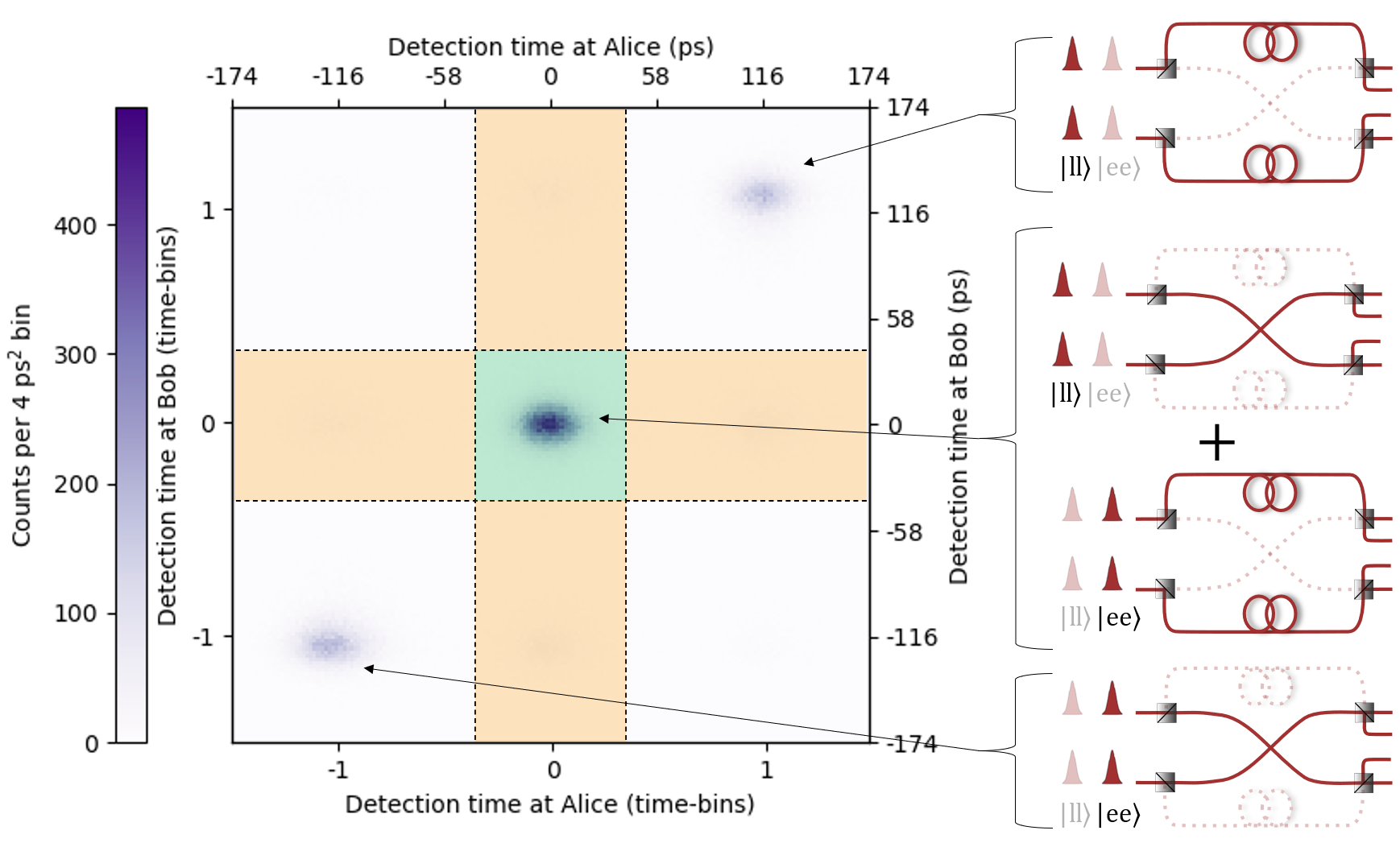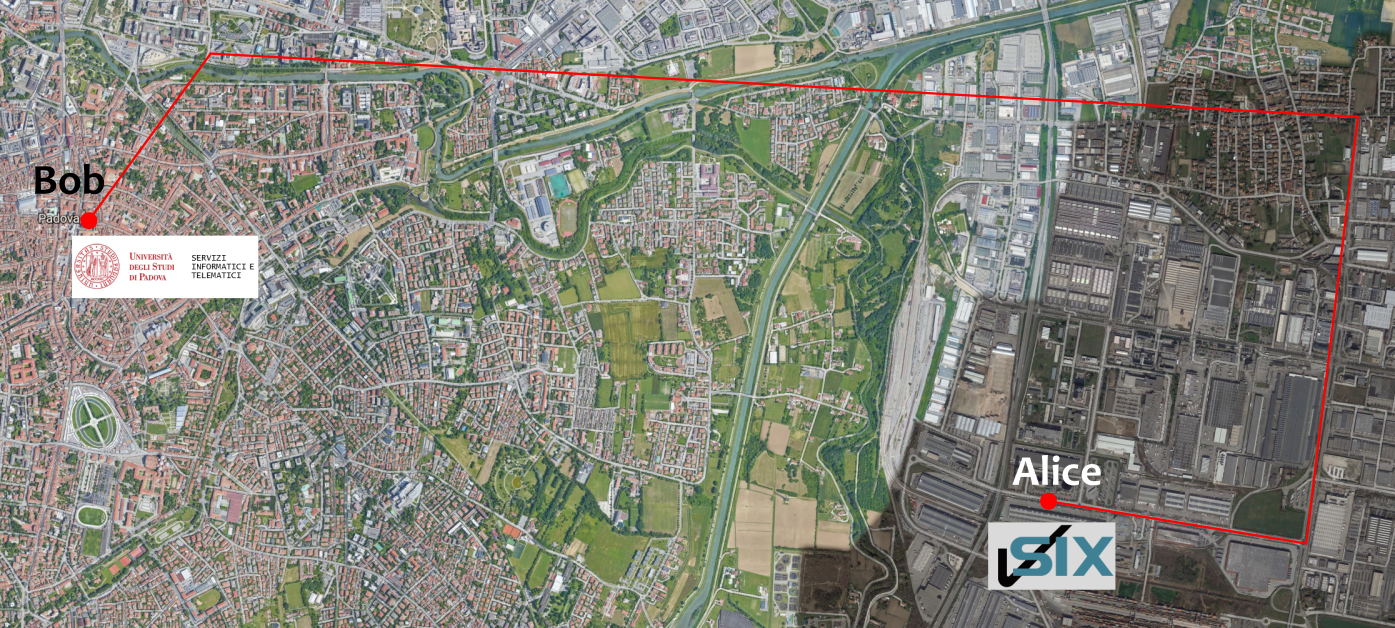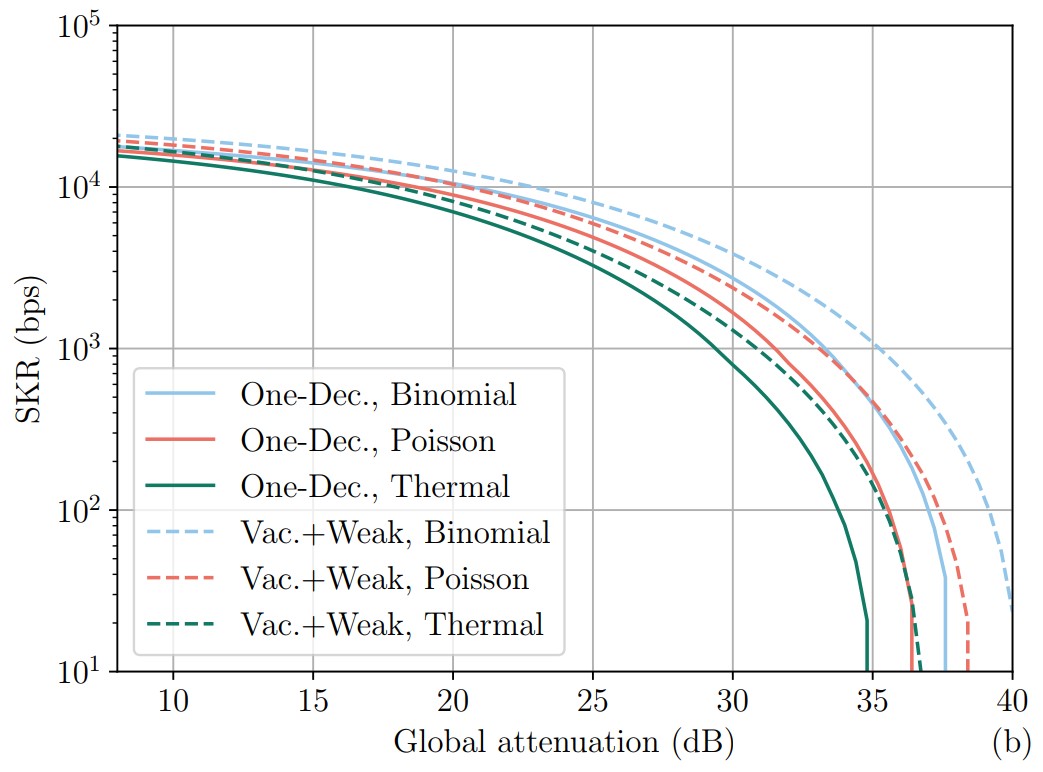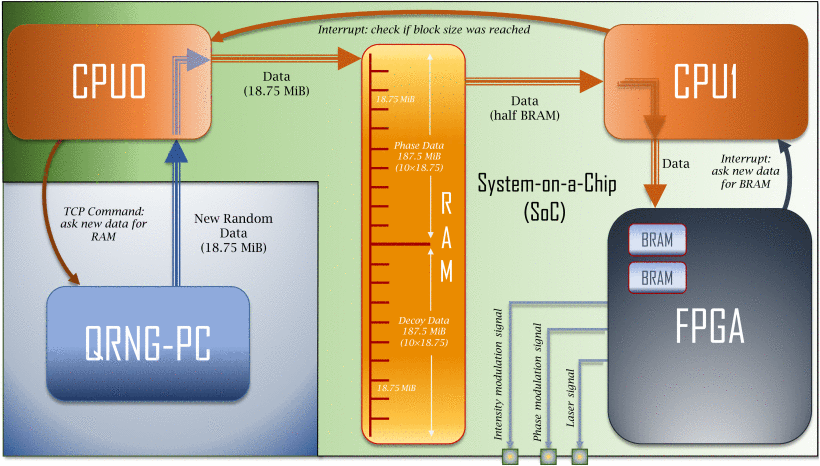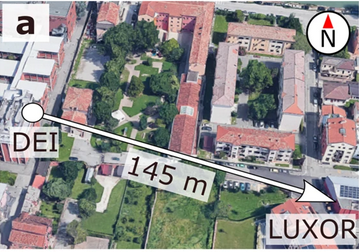Selection of papers
You can access the full list of publications here
-
High-speed source-device-independent quantum random number generator on a chip
A wide range of applications require, by hypothesis, to have access to a high-speed, private, and genuine random source. Quantum random number generators (QRNGs) are currently the sole technology capable of producing true randomness. However, the bulkiness of current implementations significantly limits their adoption. In this work, we present a high-performance source-device-independent QRNG leveraging a…
-
Experimental post-selection loophole-free time-bin and energy-time nonlocality with integrated photonics
Time-bin encoding has been widely used for implementing quantum key distribution (QKD) on optical fiber channels due to its robustness with respect to drifts introduced by the optical fiber. However, due to the use of interferometric structures, achieving stable and low intrinsic Quantum Bit Error rate (QBER) in time-bin systems can be challenging. A key…
-
Low-error encoder for time-bin and decoy states for quantum key distribution
Time-bin encoding has been widely used for implementing quantum key distribution (QKD) on optical fiber channels due to its robustness with respect to drifts introduced by the optical fiber. However, due to the use of interferometric structures, achieving stable and low intrinsic Quantum Bit Error rate (QBER) in time-bin systems can be challenging. A key…
-
Geometry of sequential quantum correlations and robust randomness certification
Quantum correlations between the measurements of two or more separated observers play a fundamental role in many applications, such as randomness generation or key distribution. Recently, it was realized that sequential measurements (i.e., defined with a precise temporal ordering between subsequent measurements on a given system) can enhance the performance of these protocols. However, the…
-
Deployment-ready quantum key distribution over a classical network infrastructure in Padua
Current technological progress is driving Quantum Key Distribution towards a commercial and world widescale expansion. Its capability to deliver unconditionally secure communication will be a fundamental feature in the next generations of telecommunication networks. Nevertheless, demonstrations of QKD implementation in a real operating scenario and their coexistence with the classical telecom infrastructure are of fundamental…
-
Security bounds for decoy-state QKD with arbitrary photon-number statistics
The decoy-state method is a standard enhancement to quantum key distribution (QKD) protocols that has enabled countless QKD experiments with inexpensive light sources. However, new technological advancements might require further theoretical study of this technique. In particular, the decoy-state method is typically described under the assumption of a Poisson statistical distribution for the number of…
-
Versatile and Concurrent FPGA-Based Architecture for Practical Quantum Communication Systems
This article presents a hardware and software architecture, which can be used in those systems that implement practical quantum key distribution (QKD) and quantum random-number generation (QRNG) schemes. This architecture fully exploits the capability of a System on a Chip (SoC), which comprehends both a field-programmable gate array (FPGA) and a dual-core CPU unit. By…
-
Practical Semi-Device Independent Randomness Generation Based on Quantum State’s Indistinguishability
Semi-device independent (Semi-DI) quantum random number generators (QRNG) gained attention for security applications, offering an excellent trade-off between security and generation rate. This paper presents a proof-of-principle time-bin encoding semi-DI QRNG experiments based on a prepare-and-measure scheme. The protocol requires two simple assumptions and a measurable condition: an upper-bound on the prepared pulses’ energy. We…
-
Resource-effective Quantum Key Distribution: a field-trial in Padua city center
Field-trials are of key importance for novel technologies seeking commercialization and wide-spread adoption. This is certainly also the case for Quantum Key Distribution (QKD), which allows distant parties to distill a secret key with unconditional security. Typically, QKD demonstrations over urban infrastructures require complex stabilization and synchronization systems to maintain a low Quantum Bit Error…
-
Full daylight quantum-key-distribution at 1550 nm enabled by integrated silicon photonics
The future envisaged global-scale quantum communication network will comprise various nodes interconnected via optical fibers or free-space channels, depending on the link distance. The free-space segment of such a network should guarantee certain key requirements, such as daytime operation and the compatibility with the complementary telecom-based fiber infrastructure. In addition, space-to-ground links will require the…


